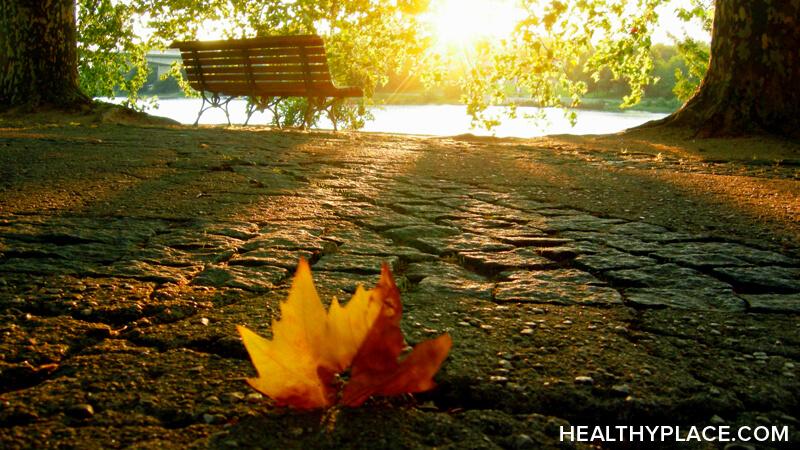5 Ways to Ease Seasonal Anxiety Naturally

I experience seasonal anxiety, so naturally I expect it--but never as soon as it appears. Today I peered out the window, and there it was. A wave of anxiety rolled through my body. It was a familiar jolt that reacted to a common anxiety trigger—a cold, blustery day with a sky darker than my favorite charcoal gray t-shirt. Autumn is here and winter is coming. Naturally, seasonal anxiety is too.
Transitions into fall and winter naturally spark symptoms of seasonal anxiety in some. Seasonal affective disorder (SAD) or “seasonal depression,” as it’s sometimes called, overlaps with seasonal anxiety.
Seasonal Anxiety Has Natural Causes
The exact causes of seasonal anxiety are unknown, but these factors may be involved:
-
- Reduced sunlight exposure can cause decreased serotonin, a neurotransmitter which boosts our mood.
- Our circadian rhythm, or biological clock, changes in parts of the world where the days become shorter.
- Seasonal change can disrupt the body's level of melatonin affecting sleep patterns and mood.¹
But living far from the equator doesn’t mean you’re doomed. I used to struggle with cold weather blues far more than I do now. While I haven’t tried SAD treatments such as light therapy and medications, I’ve found ways to ease seasonal anxiety naturally to help me through the transitions.
How to Manage Seasonal Anxiety Naturally
- Go outside. The only true way to absorb Vitamin D is through sun exposure. Time in the natural elements can also invigorate the senses.
I recall one time when I decided to go hiking in the dead of winter. Even with brisk air, I enjoyed moving, breathing, and laughing with my girlfriends. Even if all you can stand is a walk around the block or five minutes of noticing your feet on the ground, nature has a powerful effect on anxiety. - Go inside. This might sound counterintuitive, but attitude plays a role in managing anxiety. Winter is a prime time for introspection and cozy activities. I used to despise winter, and then I lived in Guatemala. I loved it, but the country only has two seasons—dry and rainy. In the dry season, I felt compelled to be outdoors constantly and felt bad if I stayed indoors. My much-needed alone time suffered. Take the time you spend inside to try a new recipe, pick up a paintbrush, or journal your reflections. Limit screen time.
- Nourish your body with seasonal foods. Take advantage of the autumn harvest by eating more whole foods such as squash, apples, greens, and cranberries. This is a wonderful time to explore comfort food creations. Also, since magnesium deficiency has shown some correlation with increased anxiety,² this is the time to up your intake of magnesium-rich foods such as nuts, leafy greens, and black beans. Avoid or limit alcohol and caffeinated beverages. Mindfully cook and eat seasonal foods. Tap into your senses of smell, sight, and taste.
- Move your body. Exercise has been shown to be an effective anxiety treatment as it produces endorphins. Whether you opt for a power walk, yoga, or tennis game, make time to move.
- Connect with others. The holidays can be overwhelming with social engagements, which may make us want to hole up in our apartments. Yet, it’s important to make time to see the people that make us laugh and lift us up when we have seasonal anxiety.
Sources
[1] Mayo Clinic, Seasonal affective disorder (SAD): https://www.mayoclinic.org/diseases-conditions/seasonal-affective-disorder. Retrieved October 30, 2017.
[2] Sartori, S.B., Whittle, N., et al. (2012, January). Magnesium deficiency induces anxiety and HPA axis dysregulation: Modulation by therapeutic drug treatment. Neuropharmacology, 62(1), 304–312. Retrieved October 31, 2017.
APA Reference
Renzi, M.
(2017, November 1). 5 Ways to Ease Seasonal Anxiety Naturally, HealthyPlace. Retrieved
on 2025, November 29 from https://www.healthyplace.com/blogs/treatinganxiety/2017/11/5-ways-to-ease-seasonal-anxiety-naturally